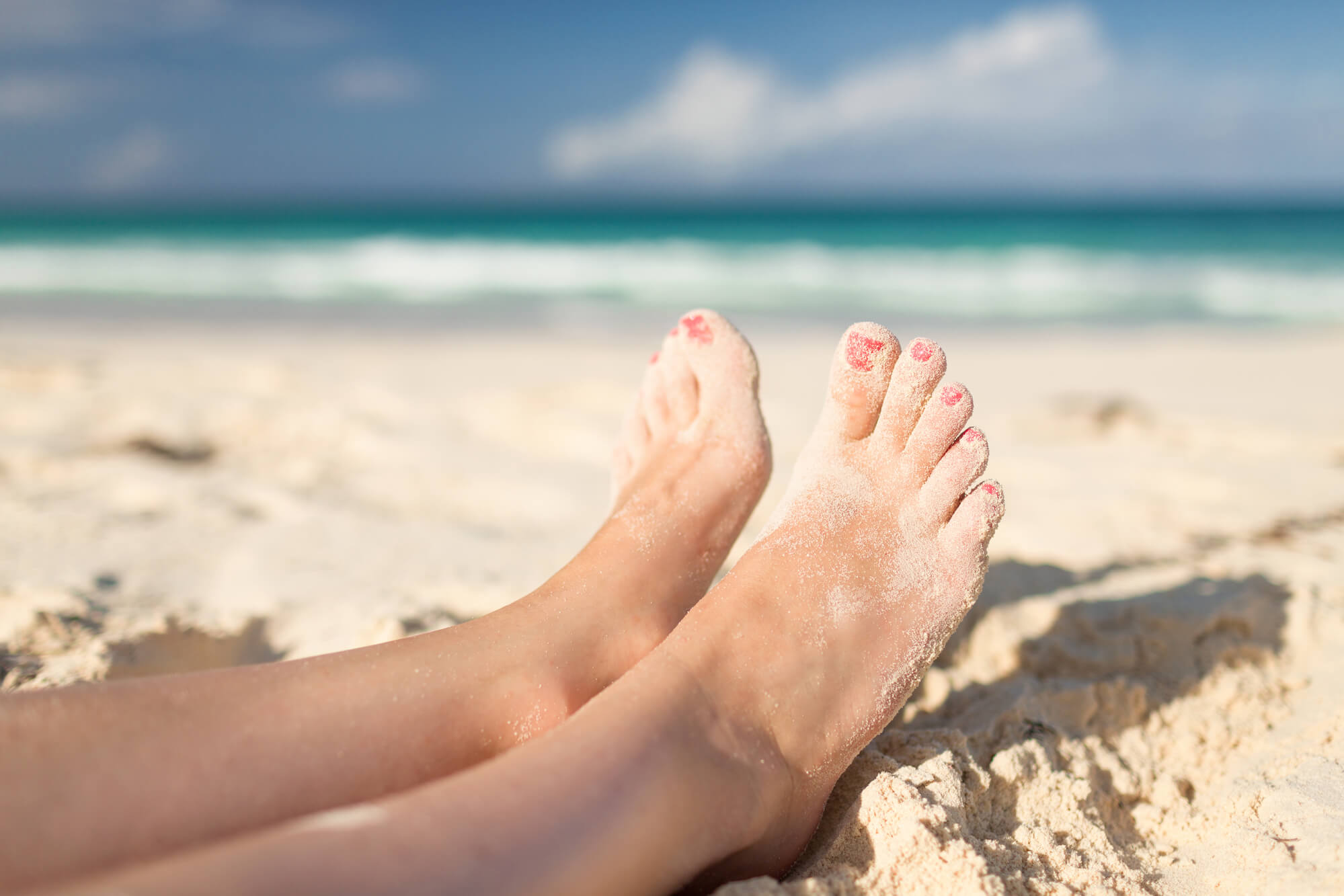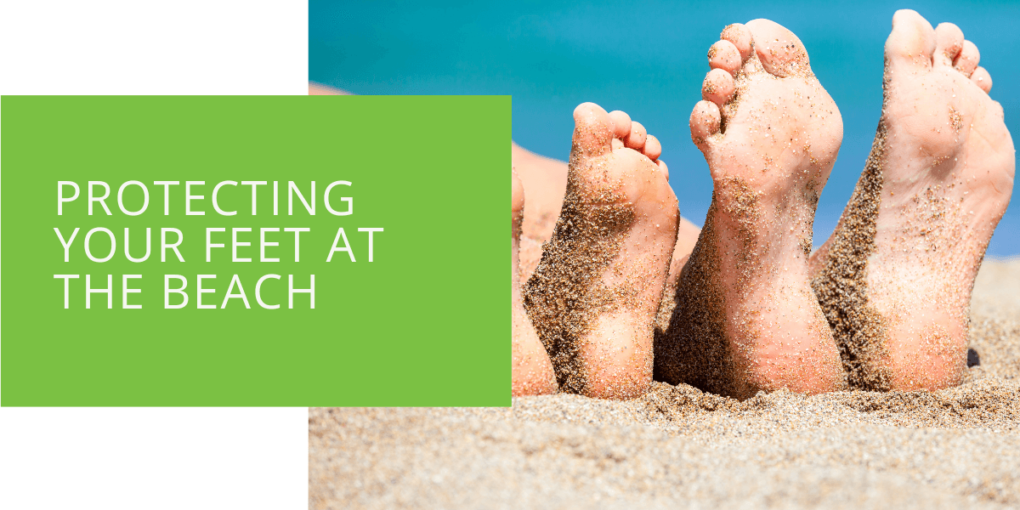Protecting Your Feet at the Beach
Spending a day at the beach can be a relaxing and enjoyable way to spend a summer day. But it's important to keep your feet safe while you're there. The sand and water can be rough on your feet; without proper protection, you could end up with cuts, blisters, and sunburns. This article will cover tips for protecting your feet at the beach and choosing the right footwear to keep your feet safe and comfortable.
Why It's Important to Protect Your Feet at the Beach
The Dangers of Cutting Your Feet on Shells and Rocks
One of the biggest dangers to your feet at the beach is the risk of cutting them on sharp shells and rocks. These can be hard to see, especially if you're wading in the water, and they can easily puncture the soles of your feet. Even small cuts can be painful and lead to infection if not properly cared for. To avoid these types of injuries, wearing shoes or sandals in the water is a good idea, especially if you're walking in areas with many shells and rocks.
The Risk of Sunburn and Blisters on Your Feet
Another hazard to your feet at the beach is the risk of sunburn and blisters. The hot sand and sun can be tough on your feet, especially if you walk barefoot or in flip-flops. Sunburn can be painful and lead to long-term skin damage, while blisters can be even more annoying, especially if they pop and become infected. To protect your feet from these injuries, apply sunscreen before you head to the beach and bring a beach towel to dry your feet after swimming.

How to Protect Your Feet at the Beach
Wear Shoes or Sandals in the Water
One of the best ways to protect your feet at the beach is to wear shoes or sandals in the water. This will help to shield your feet from sharp shells and rocks and prevent cuts and puncture wounds. If you're wading in the water, it's a good idea to invest in a pair of water shoes specifically designed to protect your feet in the water. These shoes have thick, sturdy soles that can withstand the rough surface of the beach and the weight of your body, and they're made of quick-drying materials that won't get soggy and heavy when they get wet.
Apply Sunscreen to Your Feet
Another important step in protecting your feet at the beach is applying sunscreen before you head out. The sun's rays can be harsh on your skin, and if you're spending a lot of time at the beach, it's a good idea to protect your skin from the sun's harmful UV rays. Apply sunscreen to the tops and bottoms of your feet, your ankles, and the backs of your legs. It's also a good idea to bring a beach towel to dry your feet after swimming, as this will help to prevent sunburn and blisters.
Bring a Beach Towel to Dry Your Feet After Swimming
One of the best ways to prevent sunburn and blisters on your feet is to keep them dry and cool. After swimming in the ocean or pool, it's a good idea to dry your feet off with a beach towel to help prevent these types of injuries. This is especially important if you're wearing flip-flops or sandals, as these types of footwear can hold onto moisture and heat, leading to blisters and sunburn. By bringing a beach towel to the beach, you'll have an easy way to dry off your feet and keep them comfortable throughout the day.

Tips for Choosing the Right Footwear for the Beach
Look for Shoes or Sandals with Good Traction
When choosing footwear for the beach, it's important to look for shoes or sandals with good traction. The sand and water can be slippery, and if your footwear doesn't have a good grip, you could easily slip and fall, leading to sprains, fractures, and other injuries. To find shoes or sandals with good traction, look for ones with sturdy soles made of a non-slip material, such as rubber or textured foam.
Choose Shoes or Sandals with Ample Support and Cushioning
Another factor to consider when choosing footwear for the beach is the amount of support and cushioning it provides. The sand and water can be tough on your feet, especially if you walk or stand for long periods. To prevent foot fatigue, it's a good idea to choose shoes or sandals with ample support and cushioning, especially if you're prone to foot conditions such as plantar fasciitis or heel pain. Look for shoes or sandals with arch support and padded insoles to help reduce the impact on your feet and keep them comfortable throughout the day.

Consider the Material of the Footwear and How Quickly It Will Dry
Finally, when choosing footwear for the beach, it's important to consider the material of the shoes or sandals and how quickly they will dry. Wet, heavy footwear can be uncomfortable, and if your shoes or sandals don't dry quickly, you could end up with soggy, smelly feet by the end of the day. To avoid these problems, look for shoes or sandals made of quick-drying materials, such as neoprene or mesh. These materials will help to wick away moisture and dry quickly, so your feet stay comfortable and dry throughout the day.
Conclusion
Protecting your feet at the beach is an important part of having a fun and enjoyable day. By following the tips outlined above, you can keep your feet safe and comfortable, no matter how long you spend at the beach. Whether you're walking on the sand, wading in the water, or simply relaxing in the sun, it's important to take care of your feet and choose the right footwear to keep them safe and healthy. So, next time you're planning a beach day, don't forget to bring some sunscreen, a beach towel, and a pair of comfortable, supportive shoes or sandals to keep your feet protected and happy all day long.

